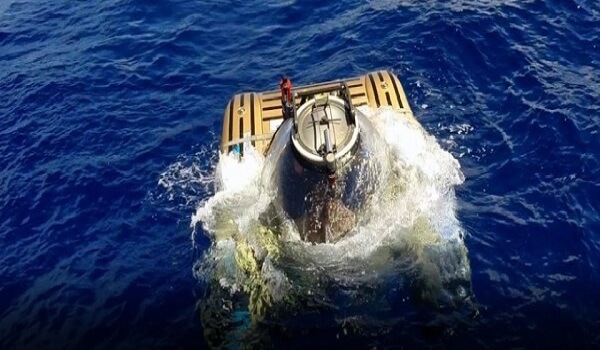The Government of India plans to send humans to the depths of the ocean. This mission can be completed with the human space mission in early 2026. Under this mission, India aims to know the mysteries of the sea by sending three people 6,000 meters below the seabed.
Deep Ocean Mission
- Support to Blue Economy: This mission has been launched to support the Blue Economy initiative of the Government of India.
- Multi-ministerial and multi-disciplinary program: This mission is a high-level multi-ministerial and multi-disciplinary program to understand the living and non-living resources of the deep sea of the Indian Ocean.
- Help in achieving Blue Economy status: This mission will be helpful in India’s efforts to achieve Blue Economy status.
- Development of new technologies: The objective of this mission is to develop technologies to obtain living and non-living resources from the deep sea.
- Nodal Ministry: The mission will be implemented by the Ministry of Earth Sciences (MoES).
- Mission Cost and Timeline: The estimated cost of the mission is Rs 4077 crore for 5 years (2021-26), which will be implemented in a phased manner.
Main Components of the Mission
- Development of technology for deep sea mining and manned submersibles and underwater robotics.
- Development of ocean climate change advisory services.
- Technological innovations for exploration and conservation of deep sea biodiversity.
- Survey and exploration of the deep sea.
- Obtaining energy and fresh water from the ocean.
- Advanced marine stations for marine biology.
Key Aspects
- The ‘New India 2030’ document highlights Blue Economy as the sixth key objective for India’s progress.
- 2021-2030 has been declared as the ‘Decade of Ocean Science’ by the United Nations.
- The Deep Ocean Mission (DOM) is one of the nine missions under the Prime Minister’s Science, Technology and Innovation Advisory Council (PMSTIAC).
- This mission is important for the sustainable use of valuable resources, such as polymetallic nodules and polymetallic sulphides.
Challenges
- High pressure in the deep ocean: Special equipment made of strong metals or durable materials is required to work in such conditions.
- Landing on the sea floor: Landing is a challenging task as the ocean surface is extremely soft and muddy.
- Energy requirement: A lot of energy and power is required to bring the minerals to the surface.
- Low visibility: Natural light reaches only up to a few metres at depth, making the task difficult.
Environmental concerns
- Threat to the ecosystem: Only a small part of the deep ocean has been explored. Environmentalists are concerned that mining may cause damage to the ecosystem, especially when no environmental protocols are followed.
- Associated Harms: The mining process can cause harm such as noise, vibration, light pollution, and leakage of fuel and chemicals.
- Harm to Marine Life: After extracting precious materials, silt and sediment are dumped back into the ocean. This can cause serious harm to filter-feeding organisms such as corals and sponges.

